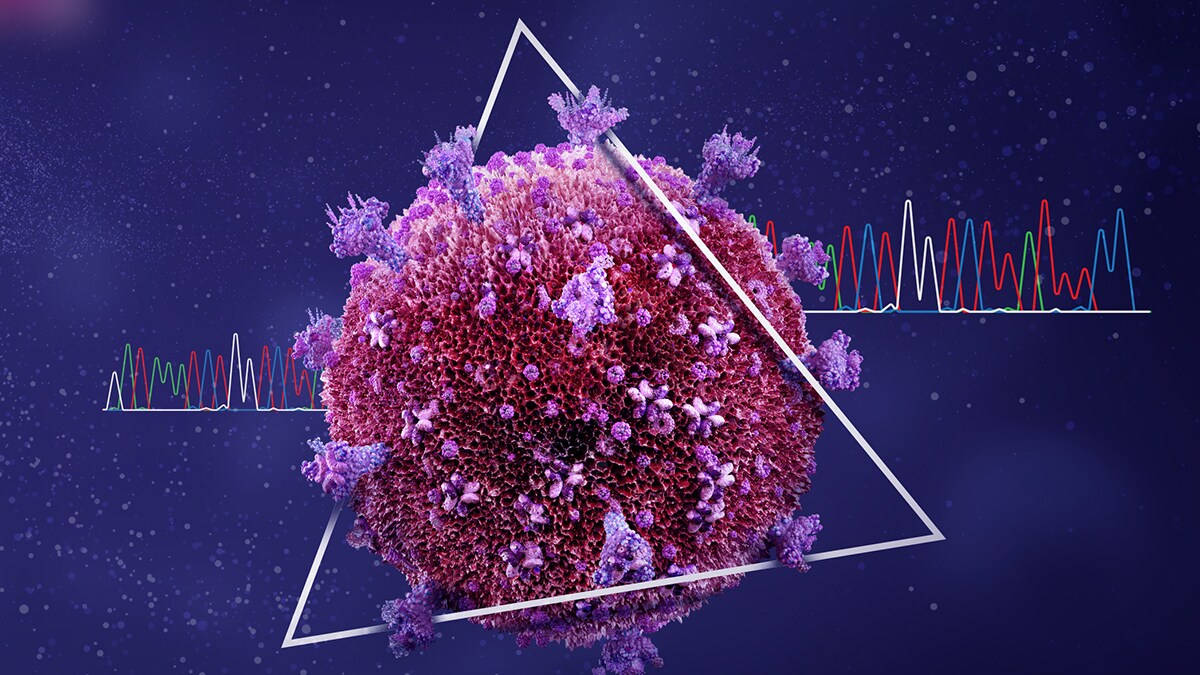A cure for HIV has not yet been found, but the continuing development of antiretroviral therapies (ARTs) over the past several decades has transformed this once devastating disease into one that can be effectively managed with treatment. Viral mutations are, however, threatening this groundbreaking progress by compromising the efficacy of drug classes that were once considered fundamental to HIV viral suppression and the prevention of ongoing transmission. In response, guidelines are pivoting away from these drug classes to ensure patients receive regimens that are likely to work, and surveillance of mutations associated with resistance to newer drug classes, such as integrase inhibitors, is becoming increasingly critical to ensuring the overall efficacy of HIV treatment options is preserved.
During a recent Labroots webinar, a team of experts came together to discuss the importance of effective HIV-1 treatment to prevent further development of resistance, outline key genetic regions of focus as the virus evolves, and describe some of the latest tools and technologies available to support mutation surveillance efforts.

Global data highlights drug resistance challenges in treating HIV
Each ART class works by targeting different parts of the HIV replication cycle to suppress viral loads and disease activity. Over time, mutations have changed these key targets, rendering some drugs ineffective and resulting in the development of drug resistant strains of the virus. When treated with drugs they are not susceptible to, these strains contribute to patients having higher viral loads and being more likely to transmit that resistant strain, altogether counteracting global measures to reduce the disease burden of HIV.
To provide insight into the current HIV drug resistance (HIVDR) landscape as well as considerations for the future, Kim Steegen, PhD, MSc., senior medical scientist at Charlotte Maxeke Johannesburg Academic Hospital, opened the webinar by sharing global data from various patient population surveys along with the latest updates to treatment recommendations.
In summary, while resistance remains a concern for all ART classes, resistance to non-nucleoside reverse transcriptase inhibitor (NNRTI) drugs has surfaced as a primary driver of treatment failure. In fact, more than half of newly diagnosed, treatment naïve infants tested in nine sub-Saharan African countries carried a mutation associated with NNRTI non-response, and failure of NNRTI regimens is often attributed to changes in the virus that result in resistance to these drugs [1].
NNRTI-based regimens were once preferred for first-line treatment of HIV, but recommendations have shifted over time toward other drug classes with lower rates of resistance, including nucleotide reverse transcriptase inhibitors (NRTIs), protease inhibitors (PIs), and integrase strand transfer inhibitors (INSTIs) [2]. The INSTI dolutegravir, in particular, has gained favor as a treatment option due to its high genetic barrier to resistance and favorable side effect profile, helping to promote adherence and better control of viral loads [3].
New solutions are needed for comprehensive HIVDR surveillance efforts
To ensure the INSTI class of drugs remains a robust tool in managing HIV, the World Health Organization (WHO) is now recommending that HIVDR surveillance efforts — many of which currently focus only on the protease and reverse transcriptase regions of HIV-1 — include a genetic analysis of the HIV-1 integrase region. During the Labroots webinar, Steve Williams, PhD, R&D leader for capillary electrophoresis at Thermo Fisher Scientific, and Natasha Wood, PhD, co-founder and chief science officer at Hyrax Biosciences, outlined how their organizations have partnered to develop a robust genotyping solution that supports the WHO’s comprehensive HIVDR surveillance guidelines.
Integrating more in-depth monitoring into existing HIVDR surveillance programs will require new, reliable solutions that include analysis of the HIV-1 integrase region. Thermo Fisher is working on developing updates to the existing Applied Biosystems HIV-1 Genotyping Kit * to include analysis of the protease, reverse transcriptase, and integrase genetic regions of HIV-1**. Compatible with both plasma and dried blood spot samples, this sensitive, reproducible, and easy-to-use kit reliably amplifies and sequences the HIV-1 virus. Customers are then able to access Hyrax’s Exatype analysis software to automatically generate an HIV drug resistance report.
Effective therapies are critical to controlling the viral loads of HIV-infected individuals, which in turn can help to improve patient health, controls spread within populations, and prevents further development of HIVDR. Expanded HIVDR surveillance including the integrase region — particularly in low- and middle-income countries where testing occurs less frequently — may help to inform development of treatment guidelines and preserve the efficacy of INSTI treatment options that have not yet been significantly affected by mutations associated with therapeutic non-response.
To learn more about the impact of HIVDR and the importance of surveillance in preserving drug efficacy, watch the Labroots webinar on demand.
For information on Thermo Fisher Scientific’s HIV genotyping solutions to support surveillance efforts and combat HIV drug resistance, please visit us at https://www.thermofisher.com/hivdr
* For Research use only. Not for use in diagnostic procedures.
** The content provided herein may relate to products that have not been officially released and is subject to change without notice.
References: